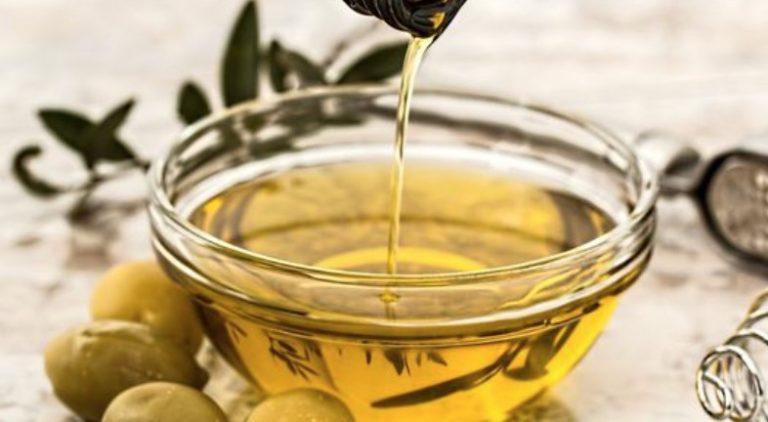You probably know sunflower oil primarily as a cheap and versatile cooking oil. But what is it doing in cosmetics? And is it even healthy?
Sunflower oil is one of the most popular cooking oils worldwide. You can buy the oil obtained from the kernels of sunflowers in the virgin or refined variety.
Virgin sunflower oil is cold-pressed and is not processed further after pressing. It is light yellow and tastes nutty. Refined sunflower oil, on the other hand, is cleaned of coloring and bitter substances after it has been extracted. Because of this, it tastes more neutral and has a paler color. Sunflower oil is best preserved when it is cold-pressed and left untreated. You can find out exactly which ingredients are involved in the next section.
The ingredients of sunflower oil and their effects
Sunflower oil mainly consists of monounsaturated and polyunsaturated fatty acids. The most important of these are the omega-6 fatty acid linoleic acid and the monounsaturated omega-9 fatty acid oleic acid. How much of these two fatty acids the sunflower oil contains depends on whether it is “normal” or “high oleic”, i.e. sunflower oil rich in oleic acid. The latter is made from a special variety of sunflowers, the seeds of which contain a particularly large amount of oleic acid.
Here is an overview of the most important ingredients:
Linoleic acid: Sunflower oil contains about 48 to 74 percent of this omega-6 fatty acid (high oleic: two to 17 percent). Linoleic acid is one of the essential fatty acids that our body cannot produce itself. Among other things, it needs them to produce other fatty acids and for healthy skin. However, you should not consume too much of this fatty acid, since omega-6 fatty acids inhibit the function of omega-3 fatty acids in the body. A good omega-6 to omega-3 ratio is between five to one and two to one, according to a 2008 study. Unfortunately, sunflower oil hardly contains any omega-3 fatty acids. You get these from rapeseed and linseed oil, walnuts and fatty sea fish.
Oleic acid: Sunflower oil contains between 14 and 39 percent of this monounsaturated omega-9 fatty acid – with high oleic sunflower oil the proportion is logically higher: up to 92 percent can be achieved. According to a study, oleic acid reduces insulin resistance in diabetic patients. Another study concluded that oleic acid boosts the immune system and has anti-inflammatory effects in the body.
Vitamin E: This is where sunflower oil can score: With around 40 to 70 milligrams per hundred grams, it contains significantly more vitamin E than, for example, rapeseed or olive oil. Vitamin E is one of the antioxidants that protect our cells from the harmful attacks of so-called free radicals. In addition, our body needs vitamin E for fat metabolism and healthy skin.
How to use sunflower oil in the kitchen
Depending on the variety, you can use sunflower oil in different ways in the kitchen:
You can use cold-pressed, virgin sunflower oil for dressings or dips that go well with the nutty taste. On the other hand, you should not heat it up – unless it is high oleic sunflower oil. This is very good for frying.
Refined sunflower oil can also be heated to high temperatures, although the frying properties of olive and rapeseed oil are better. Since refined sunflower oil tastes neutral, it goes well with most dishes. According to Stiftung Warentest, however, refined sunflower oils can contain unhealthy trans fats.

Away from the kitchen: This is how you can still use sunflower oil
Since sunflower oil contains a lot of linoleic acid and vitamin E, it has a positive effect on the skin. According to a study, for example, it helps with wound healing, has an antibacterial effect and helps the skin to regenerate.
Because of these beneficial properties, you can find sunflower oil in many skin care products – but you can also simply use virgin sunflower oil to rub into your skin. This saves you money and packaging and you know exactly which substances are getting on your skin. Sunflower oil can have similar positive effects on your hair if you use it as a hair treatment. Such an oil treatment also helps against a dry scalp.
Because of its mild taste, you can also use sunflower oil for oil pulling.




